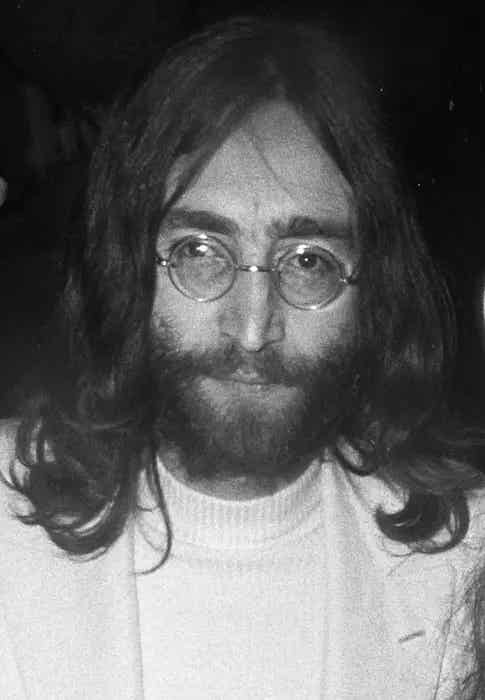Can using cannabis help your contact lenses stay in place? John Lennon thought so
John Lennon held an observation that his contact lenses seemed to stay in place better when he was under the influence of cannabis.

John Lennon (CREDIT: “John Lennon 1969 (cropped)” by Joost Evers / Anefo is marked with CC0 1.0.)
In the 1960s, John Lennon, a key member of The Beatles, experimented with contact lenses as a way to manage his vision problems, particularly his myopia, or nearsightedness. This period in his life, though not widely known, sheds light on the challenges he faced and how he dealt with them—challenges that modern optometry has since overcome.
During the early years of The Beatles' rise to fame, Lennon was rarely seen wearing glasses in public. This was a deliberate choice as he explored the use of contact lenses, attempting to “hide his myopia away,” as described by Professor Stephen Vincent from the Queensland University of Technology (QUT). Vincent, who co-directs the QUT Centre for Vision and Eye Research, delved into Lennon’s contact lens use between 1963 and 1966, uncovering some intriguing details.
At that time, contact lenses were made from rigid materials like polymethylmethacrylate, which posed significant challenges for people with astigmatism—an imperfection in the curvature of the cornea. Lennon, unfortunately, had astigmatism, making these early lenses prone to falling out unless they were specially modified. Despite this, Lennon persevered in using them, albeit with mixed success.
One particularly interesting aspect of Lennon’s experience was his observation that his contact lenses seemed to stay in place better when he was under the influence of cannabis. According to Professor Vincent, this was likely due to cannabis-induced upper eyelid ptosis, or droopy eyelids, which reduced the chances of the lenses being ejected. This anecdote adds a curious twist to Lennon’s story, connecting his lifestyle with his vision care in an unexpected way.
The research conducted by Professor Vincent, in collaboration with his wife, Roz Vincent, a Brisbane-based optometrist, was published in the journal Ophthalmic and Physiological Optics.
Titled "You've got to hide your myopia away: John Lennon's contact lenses", their study relied on historical sources, including early photos and video footage, a 1971 prescription for Lennon’s spectacles, and personal accounts from those close to Lennon, such as his first wife, Cynthia, and fellow Beatle Paul McCartney.
Related Stories
Vincent’s investigation was partly inspired by his own childhood memories of Lennon. “I was brought up on The Beatles’ 1962-1966 album (the Red Album), so my enduring mental image from childhood is John Lennon without glasses,” he shared. The contrast between this image and Lennon’s later, iconic look—complete with round glasses—prompted Vincent to explore why Lennon had transitioned so abruptly from one look to the other.
As it turns out, Lennon’s use of contact lenses was not just a phase but a necessity driven by his visual needs. However, the technology of the time was simply not advanced enough to fully accommodate his astigmatism. By 1967, Lennon had switched to glasses, a decision likely influenced by the limitations of the contact lenses available during that era.
Professor Vincent pointed out that the issues Lennon faced with contact lenses in the 1960s are no longer a concern today. “Soft contact lenses were invented in the early 1970s—after John had switched to spectacles—and are now worn successfully by millions of people around the world,” he noted. These modern lenses, including ‘toric’ lenses designed specifically to correct astigmatism, have dramatically improved in both comfort and effectiveness.
Advancements in eye care have not only made contact lenses more accessible but also much safer. Unlike the rigid, oxygen-impermeable lenses of the past, today’s lenses are designed to be healthier, reducing the risk of complications like corneal damage. Bespoke lens designs can now even accommodate complex ocular shapes, something that would have been highly beneficial to Lennon during his time.
In Australia today, around five percent of the population aged 15 to 64 wears contact lenses, addressing various eye conditions, including myopia and astigmatism. An estimated 1.4 million Australians have astigmatism, while around 6.3 million live with myopia, highlighting the widespread need for effective vision correction solutions.
Lennon’s experience with contact lenses offers a fascinating glimpse into the evolution of optometry and the personal challenges faced by one of the most iconic figures in music history. His story not only underscores the progress made in vision care but also serves as a reminder of how far technology has come in enhancing the quality of life for millions around the world.
Note: Materials provided above by The Brighter Side of News. Content may be edited for style and length.
Like these kind of feel good stories? Get The Brighter Side of News' newsletter.



